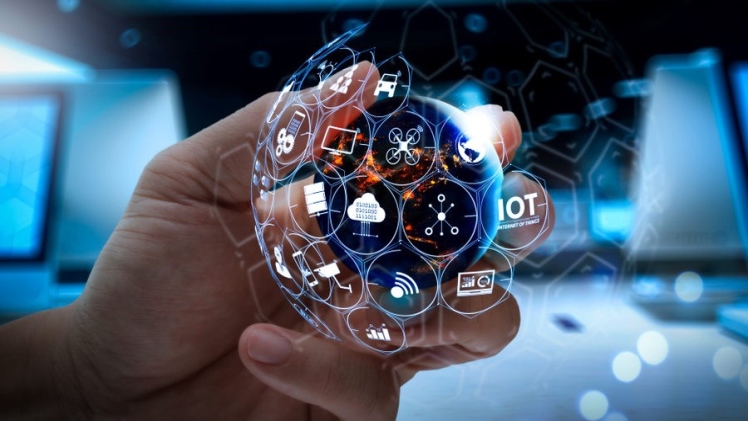In the 21st century, our daily lives are undergoing a profound transformation as emerging technologies redefine the very fabric of reality. From augmented reality to artificial intelligence, innovative advancements are shaping the way we perceive, interact with, and navigate the world around us. This article explores how emerging technologies are redefining reality, influencing various aspects of our everyday lives and paving the way for a future where the boundaries between the physical and digital realms blur.
I. Augmented Reality (AR): Bridging the Physical and Digital Worlds
Augmented Reality (AR) stands at the forefront of redefining reality, seamlessly blending the physical and digital dimensions. AR enhances our perception of the real world by overlaying digital information, images, or animations AR enhances our perception of the real world by overlaying digital information, images, or animations you can try this onto our physical surroundings. From smartphone applications that provide real-time information about landmarks to AR gaming experiences that bring virtual elements into our immediate environment, this technology is changing the way we engage with the world. onto our physical surroundings. From smartphone applications that provide real-time information about landmarks to AR gaming experiences that bring virtual elements into our immediate environment, this technology is changing the way we engage with the world.
AR is making significant strides in industries such as education, where interactive AR applications enhance learning experiences, and in retail, where consumers can virtually try on products before making a purchase. As AR becomes more integrated into everyday life, it transforms mundane tasks into interactive and dynamic experiences, creating a new layer of reality.
II. Virtual Reality (VR): Immersive Experiences and Simulated Realities
Virtual Reality (VR) takes the concept of redefining reality a step further by creating entirely immersive experiences in simulated environments. Through the use of VR headsets, users can be transported to virtual worlds, whether for entertainment, education, or professional training. VR is revolutionizing the gaming industry, providing users with a sense of presence in fantastical realms.
Beyond entertainment, VR is making inroads in healthcare, offering therapeutic applications for mental health treatment, pain management, and exposure therapy. Architectural and design professionals are using VR to visualize projects before construction begins, providing a new level of realism to planning processes. The integration of VR into everyday life represents a paradigm shift in how we perceive and interact with both the real and imagined.
III. Artificial Intelligence (AI): A Personalized and Predictive Reality
Artificial Intelligence (AI) is a transformative force in redefining reality, particularly in the realm of personalization and prediction. AI algorithms analyze vast amounts of data to understand user behavior, preferences, and patterns, enabling the creation of personalized experiences. From recommendation engines on streaming platforms to virtual assistants that anticipate user needs, AI is crafting a reality tailored to individual preferences.
In healthcare, AI is enhancing diagnostics, predicting potential health issues, and personalizing treatment plans. The automation of mundane tasks through AI-driven technologies is freeing up time for individuals to focus on more meaningful aspects of their lives. As AI continues to evolve, its role in shaping a personalized and predictive reality becomes increasingly integral to our daily routines.
IV. Internet of Things (IoT): Connected Realities and Smart Living
The Internet of Things (IoT) has ushered in an era of connected realities, where everyday objects are embedded with sensors, connectivity, and intelligence. From smart home devices that can be controlled remotely to wearable technologies that monitor health metrics in real-time, IoT is interweaving the physical world with a digital layer. The result is a more responsive and interconnected reality that enhances efficiency, convenience, and sustainability.
In smart cities, IoT technologies are optimizing traffic flow, reducing energy consumption, and enhancing public services. Wearable IoT devices, such as fitness trackers and smartwatches, provide users with insights into their health and well-being. As IoT expands its reach, the notion of connected realities becomes synonymous with the way we live, work, and interact with our surroundings.
V. Robotics: Transformative Automation and Human-Machine Collaboration
Robotics, once confined to manufacturing floors, is now entering our everyday lives, redefining the reality of work, service, and even companionship. Collaborative robots, or cobots, work alongside humans in various industries, automating repetitive tasks and enhancing efficiency. From robotic vacuum cleaners in households to robotic process automation (RPA) in business processes, robotics is becoming an integral part of our daily routines.
Advancements in social robotics are giving rise to robots designed for companionship and assistance, particularly in healthcare and eldercare settings. Humanoid robots with interactive capabilities are transforming the way we perceive machines, fostering a new reality where humans and robots collaborate for mutual benefit.
VI. Biotechnology and Personalized Medicine: Redefining Health Realities
The intersection of biotechnology and emerging technologies is redefining the reality of healthcare, moving towards personalized and precision medicine. Advances in genomics, CRISPR gene editing, and diagnostics are enabling healthcare professionals to tailor treatments based on an individual’s genetic makeup. Wearable biometric devices and health apps further empower individuals to monitor and manage their health proactively.
Telemedicine, facilitated by technology, allows patients to connect with healthcare professionals remotely, breaking down geographical barriers and improving access to medical care. The integration of biotechnology into healthcare not only transforms treatment approaches but also empowers individuals to take an active role in managing their well-being.
VII. Ethical Considerations and Societal Impacts:
As emerging technologies redefine reality, ethical considerations and societal impacts come to the forefront. Issues related to privacy, data security, algorithmic bias, and the digital divide necessitate careful examination and responsible deployment of these technologies. Ensuring that the benefits of emerging technologies are accessible to all while minimizing potential harms requires a thoughtful and inclusive approach.
Conclusion:
The ongoing evolution of emerging technologies is not merely a glimpse into the future; it is a redefinition of our present reality. Augmented and virtual realities, artificial intelligence, the Internet of Things, robotics, and biotechnology are converging to create a world where the boundaries between the physical and digital realms are increasingly blurred. As these technologies become woven into the fabric of our everyday lives, the challenge is not only to embrace the transformative potential but also to navigate the ethical considerations, ensuring that the redefined reality is inclusive, responsible, and aligned with the betterment of humanity. In embracing this era of technological redefinition, we find ourselves at the intersection of innovation and responsibility, shaping a reality that reflects the aspirations and values of a digitally connected and evolving society.

